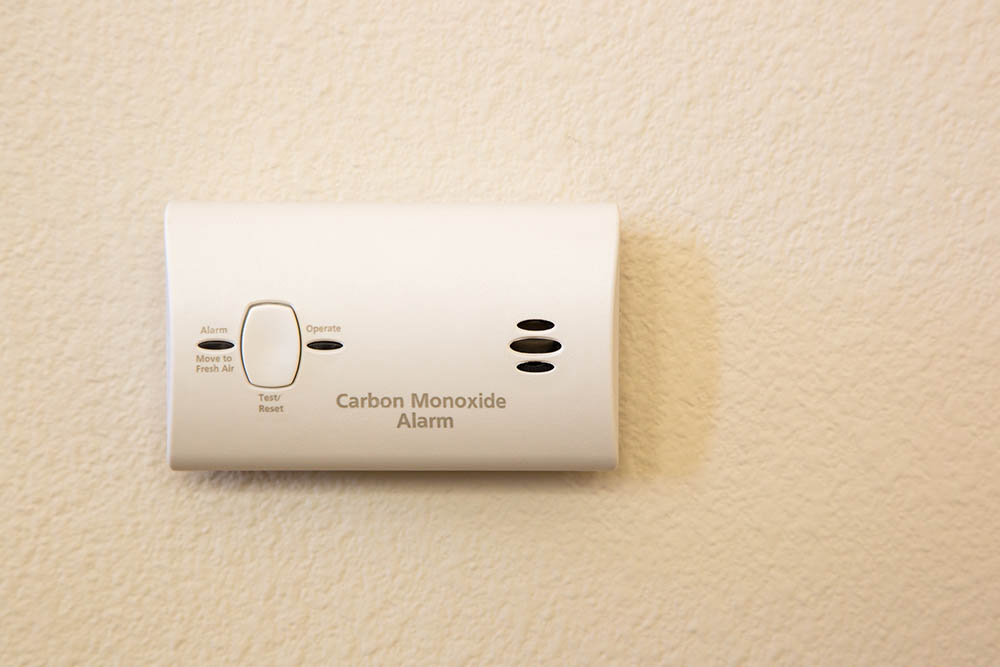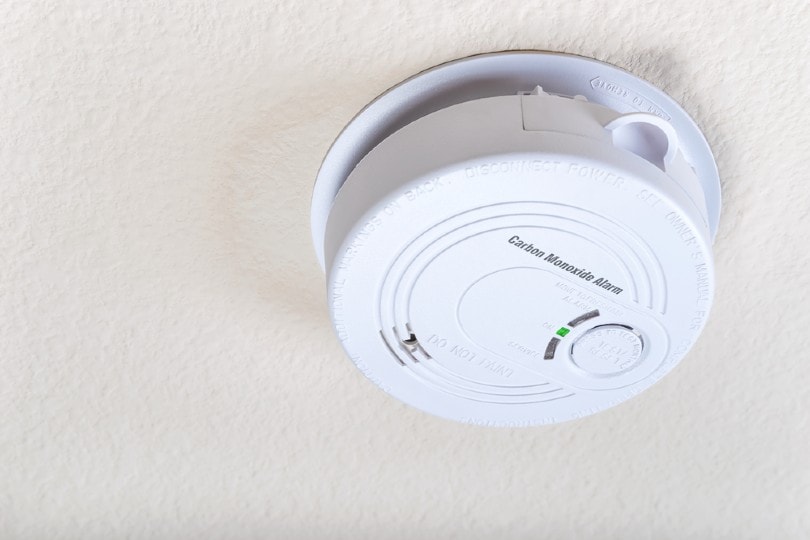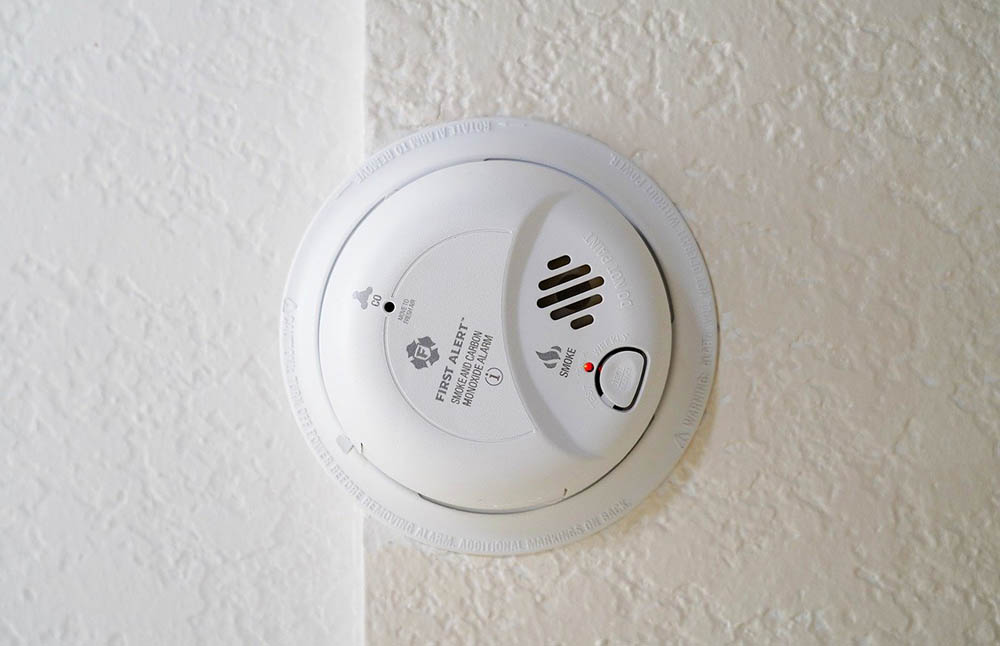What to Do if Your Carbon Monoxide Alarm Goes Off? Complete Guide
-
Pete Ortiz
- Last updated:

On average, 400 Americans die yearly from carbon monoxide¹ (CO). It kills by replacing essential oxygen molecules in the blood with dangerous carboxyhemoglobin¹. At home, the major sources of carbon monoxide are furnaces and fossil fuel heaters.
Fortunately, with the introduction of carbon monoxide alarms, it is easy to reduce the hazardous effects of this odorless and colorless gas. However, these alarms can often confuse homeowners, who may not know how to react if their alarm goes off. This guide will help you understand the series of actions to take when the alarm goes off.
How Does a Carbon Monoxide Sensor Work?
A carbon monoxide sensor measures the amount of CO in the air and sets off an alarm when it reaches a certain level. The most common type of sensor is an electrochemical sensor¹ which uses a chemical solution and electric current to work.
It is a small battery-powered device with electrodes, chemical solution, fuel cells, and an alarm siren system. Carbon monoxide is a reactive gas, and when it comes into contact with the chemical solution, it changes its properties. Electrodes in the solution will then detect changes in how electricity flows through it depending on the level of carbon monoxide. This will set off the alarm.
On the other hand, a biomimetic sensor uses chromophoric compounds that change color after reacting with CO. The changes are captured and translated using an infrared light emitting diode. High CO in the air will trigger the alarm.
Carbon monoxide sensors are usually located near appliances such as furnaces or space heaters to warn occupants of potentially dangerous levels. But they can be installed anywhere—even outside—to monitor any potential sources of CO. Experts recommend installing them in living areas, bedrooms, and other spots where people spend time resting or sleeping. It’s also a good idea to have them on every floor to cover the entire home.

The 4 Things to Do When a Carbon Monoxide Alarm Goes Off
The first course of action is to call 911. This toll-free communication channel will connect you to the fire department and ambulance services. The fire department will dispatch a team to come and assess the risk, while an ambulance will be on standby in case someone needs urgent medical attention. Besides that, most 911 responders are trained to handle life-threatening issues and will offer you quick advice on how to save yourself, your kids, and your pets.
1. Go Outdoors
The most dangerous place you want to be when carbon monoxide is high is indoors. Breathing in a few gasps of this “silent killer” will weaken the body and lead to confusion and nausea. So, stay out of harm’s way by getting outside.
If you have a pet or a child in one of the rooms, get 20 feet away from the house and take in several heavy breaths. Hold your breath and run back into the house to evacuate them. When doing this, start with low-risk areas.
These areas are near a window or far from a fire, boilers, or the garage. Alternatively, if you have several alarms, you might be able to know safer areas. For instance, if the kitchen alarm has gone off, it is a dangerous zone compared to places whose alarms are yet to go off.
2. Open Windows
When using digital alarms, you will know the concentration of carbon monoxide in the air. Open windows and doors to let in fresh air if the concentration increases steadily. The gas quickly diffuses into the air to safe levels. Of course, you will need to stay outdoors until your home is deemed safe.

3. Seek Medical Assistance
Carbon monoxide poisoning can be deadly, so it’s important to know the symptoms. Early symptoms include headache, dizziness, nausea, and fatigue. If you experience any of these symptoms, have someone drive you to a hospital or call 911. Do not re-enter the house until it has been checked by a professional.
4. Turn Off Suspected Sources of Carbon Monoxide
The major sources of carbon monoxide¹ are driers, furnaces, gas stoves or ovens, fuel engines, and gas lawnmowers. When camping, possible sources are: charcoal grills, kerosene lanterns, portable generators, and fuel-burning heating equipment.
Turn off all sources of heat that generate carbon monoxide if the alarm goes off. For gas stoves, ensure a safety valve is outside to cut off the gas supply during an emergency.
What about a False Alarm?
Never assume a CO alarm is false. Start by taking necessary actions to keep everyone safe before going back to assess the situation. A false CO alarm goes off when there are no triggers. This can be due to several reasons:

The CO Detection Unit Is Past Its Expiry Date
Every alarm has a detection system that uses chemicals or salts with a limited lifespan. Typically, the detector will expire after 3 to 7 years¹. If yours has outlived its service life, it may send wrong signals to the siren.
Moisture
Moisture from the bathroom and kitchen areas affects how a CO detector works. You can easily draw this hypothesis by buying two detectors and installing one near the bathroom and the other in a dry place. Steam from the bathroom will affect the one that is closer to it.
Carbon Monoxide From the Neighbors
Carbon monoxide from neighboring apartments may diffuse into your home, setting alarms off. Though this is not a false alarm, the source of the problem is outside your home.
Conclusion
Call 911 if a CO alarm goes off. As you wait for the emergency service to respond, take every living thing outside the house, open windows, and be on the lookout for CO poisoning symptoms, including fatigue, headache, and confusion.
- https://www.cdc.gov/dotw/carbonmonoxide/index.html#:~:text=Each%20year%2C%20more%20than%20400,hospitalized%20due%20to%20CO%20poisoning
- https://www.sciencedirect.com/topics/earth-and-planetary-sciences/carboxyhemoglobin#:~:text=Carbon%20monoxide%20combines%20with%20hemoglobin,to%20other%20oxygen%2Dbinding%20sites.and
- https://www.nhs.uk/conditions/carbon-monoxide-poisoning/
- https://fireline.seattle.gov/2020/02/04/replace-your-carbon-monoxide-co-alarms-before-they-expire/#:~:text=CO%20alarms%20have%20a%20life,the%20alarm%20should%20be%20replaced
Featured Image Credit: Andy Dean Photography, Shutterstock
Contents


